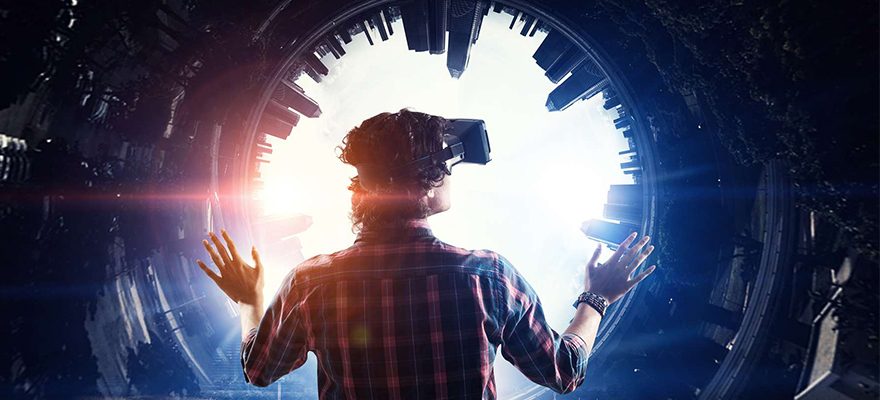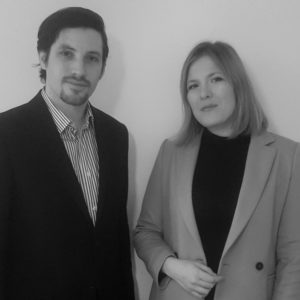

Sébastien Lachaussée & Elisa Martin-Winkel
Produce VR in France
Virtual reality works have grown significantly in recent years. The exhibition of three of them at the last Cannes Film Festival (directed by Laurie Anderson and Hsin-Chien Huang) or the development of a virtual reality film competition at the Venice Film Festival are just the showcase of the significant growth of the sector. Thus, it is essential to consider this new media and the market it occupies, the financing possibilities for such projects, but also the legal difficulties that may arise.
A growing market that remains fragile
The notoriety and use of virtual reality is increasing and we are witnessing the opening of dedicated « theaters » all over France, with no less than 6 venues in Paris but also some in Reims, Lyon or Marseille. However, there is a low level of equipment to households, although 15.9% of 25-34 year olds are equipped.
The virtual reality experiments are still relatively anecdotal and 58% of those interviewed in the CNC study who had already had a virtual reality experience had only one. However, these experiences are judged very positively by the participants, who generally express their wish to give it another try.
Internationally, Unifrance study establishes that between 2017 and 2018, the sales of the French VR works has multiplied by 5 (+ 415.7%). In this respect, it is necessary to highkight a very strong position of the documentary genre which alone generates 60% of the receipts.
Again, this does not yet demonstrate a habit of watching VR works. Indeed, with a 21.8% share of the market, the cultural network is the main source of revenue, followed closely by festivals (19.8%) and distributors (19.4%).
Financing of VR works
CNC, regions or private funds noticed the arrival of the new media that is virtual reality and act upon it. We will not draw up an exhaustive list, but we would like to mention some possibilities open to the producer wishing to develop and produce VR contents.
a) CNC
In October 2018, the CNC set up a Digital Experiences Support Fund, which replaced the new media fund and aimsto support innovative audiovisual works based on an interactive and / or immersive creation process.
This fund is open to both authors and producers and intervenes on every phases of a project and thus proposes a support for the writing (intended for the authors), a development aid and a production aid (intended for the producers). For these three aids, it is notably understood that the project must be an original work specifically designed for an immersive or interactive experience. 4 commissions are organized each year.
Development aid is allocated to the producers to accompany the development works of the project. It is capped at 50% of the writing and development budget, which may include expenses from writing to pre-production, and may cover the cost of a pilot or prototype. Production aid is capped at 50% of the production budget.
Over the last 4 commissions, the average amount of aid granted is of € 31 297 for development aid (37 films supported) and has reached € 48 000 for “Fortune!” (Atlas V) and € 55,000 for “Le Baptême” (Genghis Khan production), while the average amount of production aid is € 87,916 (12 films supported) and has reached € 120,000 for “Ex Anima – Bartabas” (Atlas V) or € 150,000 for “360 of the dead” (Agat Films & Co.).
In both cases, it is understood that at least 50% of the expenses must be carried out in France and for an international co-production, the minimum expenditure amounts to 50% of the French part of financing. It should be noted that a project cannot cumulate, for the same expenses, the development aid or the production aid with any other support granted by the CNC.
It is also possible to mention the DICRéAM (a support for multimedia and digital art Creation), intended to support digital writing projects in various fields of contemporary creation (visual arts, performing arts, literature…) or th technological innovation aid. The latter applies under conditions to film, audio-visual or new media producers, regardless of the genre and format of the work.
Finally, producers can be supported in their R & D activities, through the support mechanism RIAM (Research and Innovation in Audio-visual and Multimedia). It may notably apply to designing 360 ° capture tools or production and post production tools adapted to virtual reality content and the constraints inherent to this new format.
b) Local supports
We mention hereabove as examples some local and regional initiatives supporting open access to virtual reality.
Thus, Paris set up a transmedia support fund in 2015 dedicated notably to virtual reality or augmented reality works of any genre (fiction, animation, documentary, experimental) and any forms (series, interactive narrations, virtual reality films, etc.).
The aid is awarded in the form of a grant and is intended exclusively for writing and development expenses related to the project in the Paris area. It is capped at 50% of the development budget and at € 20,000. Nonetheless, it should be noted that most of the aid granted is less than € 10,000.
Also, in the Auvergne Rhône Alpes region, the Audio-visual Cinema and New Media Creation Fund offers development and production support for original works specifically designed for new media (notably VR and AR).
This regional development aid is capped at € 20,000, within the limit of 50% of the development budget, and the production aid is capped at € 60,000, within the same limit of 50% of the production budget.
A localization of expenditures in Auvergne-Rhône-Alpes is required and established at 100% for the development expenditures (writing, development and pre-production) and at 160% for the total production expenses in Auvergne Rhône-Alpes (costs writing and development included).
In 2018, 3 projects benefited from a development aid for a total amount of € 55 000 et 4 projects benefited from a production aid for a total amount of € 95 000.
We can also mention the New Media Fund available through Pictanovo in Haut de France region. It offers support for the writing, development and production of new media projects. Writing and Development aids can cover up to 100% of pre-production costs, capped at € 10,000, production aid can be up to 50% of production costs (derogations are possible), capped at € 60,000.
Other regions have specific aid schemes for new media.
c )Private Funds
Since 2009, the Beaumarchais Foundation, in partnership with Orange, offers an Orange XR grant dedicated to supporting immersive projects (AR, VR …). It rewards up to three original fiction projects per year through a € 5,000 writing aid and a production aid of € 20,000. It can be requested by an author or a production company.
The Jean-Luc Lagardère Foundation also offers a grant of € 25,000 to support a digital creation project per year. The purpose of this grant is to develop an innovative and ambitious digital creation project in the field of art and culture and may take the form of an artistic work, such as a film in virtual reality.
In addition, some 30 companies and investment funds set up in 2016 Virtual Reality Venture Capital, with € 10 billion, to finance start-ups related to virtual reality, augmented and mixed, since the first phase. priming to that of pre-IPO (initial public offering).
Other funding can be obtained through international co-productions, and foreign funds such as the Kaleidoscope Fund (https://www.kaleidoscope.fund/).
Legal issues
Finally, it is necessary to quickly consider that the virtual reality imposes new processes of writing, development and production of the projects that diverge appreciably from the uses of the classic audio-visual production.
In this context, certain provisions are legally binding (proportional remuneration on the revenues, accountability) and apply in the context of new media and virtual reality, where other provisions are not applicable the sector (collective agreements, definition of the net receipts …)
Furthermore, it is important to establish contracts adapted to this new media and in particular to provide the authors with writing and assignment of rights agreeemnt written taking into account the realities of the VR.
For example, it is interesting to organize the development of a prototype, but also a non-VR version of the project to facilitate its financing, and notably benefit from the advantages of VR and non VR financings.
In any case, it is necessary to acquire the rights pertaining to the exploitation of the film in public installations (LBE), which is an important part of VR exploitation, and which is not usual in assignment for non-VR productions. Lastly, it is essential to provide step deals taking into account the production risks when the financing of the project is organized in several stages (prototype/pilot, VR version, non-VR version, series of films…).
Accordingly, co-production agreement will have to take into account the specificities of the VR, and in particular an important development phase, the requirements of the different local funds, the exchange risks, and the operating conditions specific to the VR.
Therefore, it is wise for a producer to consult wiht a specialized lawyer who will study the specificities of the project and will draft and negotiate the necessary agreements at best for the parties.
SHARE THIS ARTICLE
CONTACT
OUR OFFICES
INFORMATION
sl@avocatl.com
PHONE
+33.1.83.92.11.67
Address
121, boulevard de Sebastopol
75002 Paris
5th floor / Staircase A
Follow us :
Newsletter
Please enter your e-mail :
